
Bend is a city in Central Oregon and the county seat of Deschutes County, Oregon, United States. It is located to the east of the Cascade Range, on the Deschutes River.
PotlatchDeltic Corporation is an American diversified forest products company based in Spokane, Washington.
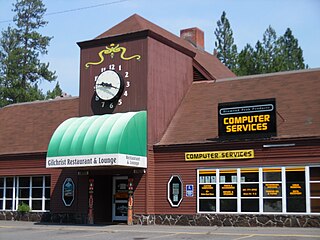
Gilchrist is an unincorporated community in Klamath County, Oregon, United States on U.S. Route 97 between Bend and Klamath Falls.

Central Oregon is a geographic region in the U.S. state of Oregon and is traditionally considered to be made up of Deschutes, Jefferson, and Crook counties. Other definitions include larger areas, often encompassing areas to the north towards the Columbia River, eastward towards Burns, or south towards Klamath Falls. These three counties have a combined population of 200,431 as of the 2010 census, with Deschutes the largest of the three counties, having approximately four times the population of the other two counties combined. As of 2015, the most populous city in the region is Bend, with an estimated 87,014 residents. As defined by the three county definition, Central Oregon covers 7,833 square miles (20,290 km2) of land. Central Oregon has had 3 record tourism years beginning in 2012. Over 2.2 million people visited Central Oregon in 2012 and again in 2013.

Samuel Spencer Johnson was an American businessman, legislator, and philanthropist in the state of Oregon. He owned saw mills and large tracts of timber land near the Metolius River, Black Butte, and Sisters, Oregon. He served seven terms in the Oregon House of Representatives; and along with his wife, founded the Samuel S. Johnson Foundation. He also served as mayor of Redmond, Oregon, from 1979 to 1984.

The Drake Park Neighborhood Historic District is located adjacent to Drake Park near the historic downtown area in Bend, Oregon, United States. Because of the unique and varied architecture in the Drake Park neighborhood and its close association with the early development of the city of Bend, the area was listed on the National Register of Historic Places in 2005.
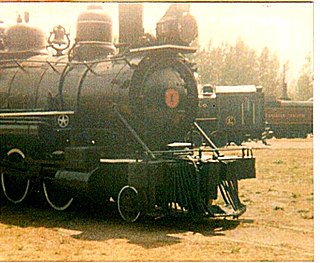
Brooks-Scanlon Corporation No. 1 is a 2-6-2 steam locomotive at Steamtown National Historic Site in Pennsylvania. This type of locomotive is referred to as a Prairie-type locomotive. This locomotive was built specifically for the lumber industry and served several lumber firms in Florida.
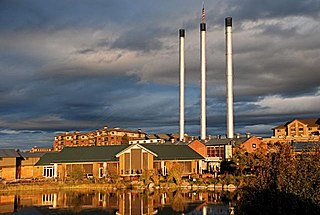
The Old Mill District is a historic area formerly occupied by two lumber mills in Bend, Oregon. Encompassing approximately 270 acres (110 ha) along the Deschutes River, the Old Mill District is now a mixed-use area known for its shops, galleries and restaurants. It draws thousands of visitors and employs more than 2,500 people. The area underwent significant development since the mid-1990s, when the land was purchased by developer Bill Smith, president of William Smith Properties. He maintained elements of the original buildings, including the area's three signature smokestacks. There are nine historically renovated buildings on property. The oldest is the Little Red Shed used to store fire equipment and is now the home to the art studio and gallery of Anna Amejko. Notable additions include the Hayden Homes Amphitheater and the nation's first 12-station Fly Casting Course.

The Goodwillie–Allen House is a small American Craftsman-style bungalow located in Bend, Oregon. The house was constructed in 1904 by Arthur Goodwillie, the first mayor of Bend. Today, the building is owned by the City of Bend. It is the oldest structure inside the city limits of Bend, the oldest American craftsman style house in Deschutes County, Oregon, and the second oldest craftsman-style bungalow in Oregon. The Goodwillie–Allen House was added to the National Register of Historic Places in 2007.
Carbur is a former company town developed by the lumber industry in Taylor County, Florida, which operated several lumber camps around the settlement. Carbur is named for the two companies that collaborated to exploit the swampy area's cypress forests: Carpenter-O'Brien Lumber Company and Burton-Swartz Lumber Company.
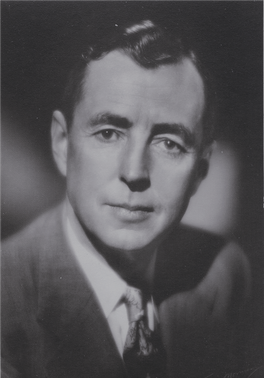
Truman Wesley Collins was an American businessman, civic leader, and philanthropist from the state of Oregon. He was born into a wealthy and influential business family. Collins graduated from Willamette University and then attended graduate school at Harvard University. After college, he returned to the Pacific Northwest to join his family's lumber business. Over the years, he was the top executive for a number of Collins family businesses. He was also an active leader in several timber-related industry groups and contributed to selected education and religious institutions.

James Franklin Short (1902-1986) was an American businessman, rancher, and politician from the state of Oregon. He was a Republican who served one two-year term in the Oregon House of Representatives, where he represented a large rural district in central and southcentral Oregon. He also served two separate periods as Oregon's director of agriculture. He was originally appointed to the position by Governor Paul L. Patterson. He then continued his service under Elmo Smith followed by a brief time under Robert D. Holmes. Later, he was re-appointed to the position by Governor Mark Hatfield. In between his periods of service in the Oregon Department of Agriculture, Short was state chairman of Oregon's Republican Party.

Harvey Hamilton DeArmond was an American attorney, judge, and Oregon state legislator. When the state of Oregon created Deschutes County in 1916, DeArmond was appointed the county’s first district attorney. Later, he served as president of the Oregon State Bar Association. DeArmond was a Republican who served one two-year term representing Deschutes County in the Oregon House of Representatives.

Brooks Resources is a real estate development company with significant land holdings in Central Oregon, United States. The company was formed in 1969 as a subsidiary of Brooks-Scanlon Lumber Company. It became an independent corporation in 1979. Brooks Resources develops residential neighborhoods, vacation rental properties, commercial complexes, and mixed-use communities. The company headquarters is located in Bend, Oregon.
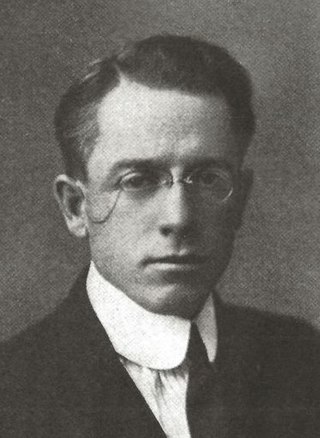
Vernon A. Forbes was an American attorney and state legislator from the state of Oregon. After graduation from law school in Minnesota, he moved to central Oregon and opened a law office in the city of Bend. Forbes was a Republican who served three two-year terms in the Oregon House of Representatives, representing Crook, Deschutes, Grant, Jefferson, Klamath, and Lake counties. He drowned during a fishing trip near the end of his third term in the legislature.
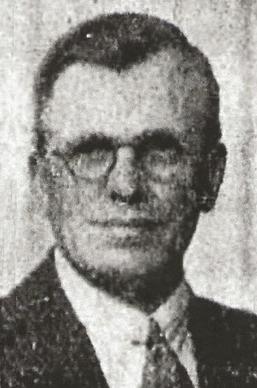
Ole William Grubb was an American politician who served one two-year term in the Oregon House of Representatives as a Democrat. Before being elected to the legislature, Grubb was a commissioner for Deshutes County and justice of the peace for the city of Bend, Oregon.

John Patrick Metke, commonly known as Pat Metke, was an American businessman and politician who served as an Oregon state legislator. He was a Republican who served one two-year term in the Oregon House of Representatives. Outside the legislature, Metke was a partner in an insurance agency located in Bend, Oregon. He also served seven years on the Oregon Game Commission, an executive group appointed by the governor to oversee the Oregon Department of Fish and Wildlife.

Kessler Richard Cannon was an American radio broadcaster and state legislator from Oregon. He was a Republican who served two two-year terms in the Oregon House of Representatives. Outside the legislature, Cannon was a broadcaster and executive for radio station KBND in Bend. He also served as Governor Tom McCall's assistant for natural resources before becoming director of the Oregon Department of Environmental Quality.
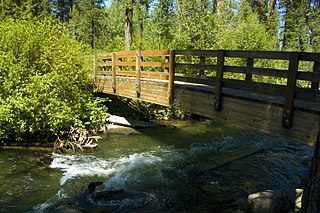
Shevlin Park is a 981 acres (397 ha) park located in Bend, Oregon. It was first established in 1921 by the City of Bend. Notable natural and manmade features include Tumalo Creek, Aspen Hall, and Fremont Meadow.
Foley is an unincorporated area in Taylor County, Florida, United States. It is located about 5 mi (8.05 km) southeast of Perry. The area is named after Jerry S. Foley, who founded it as a company town for the Brooks-Scanlon Lumber Company.



















